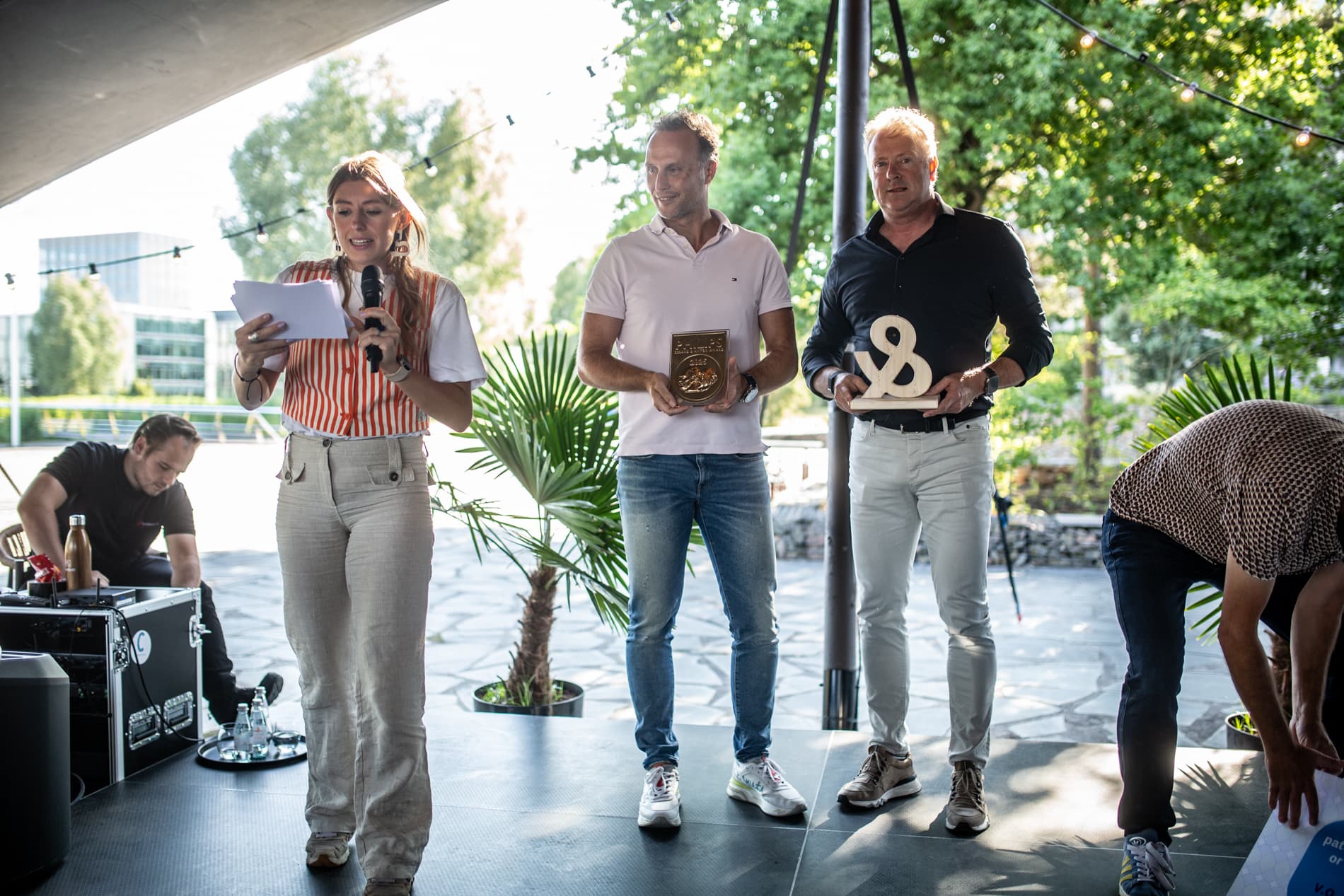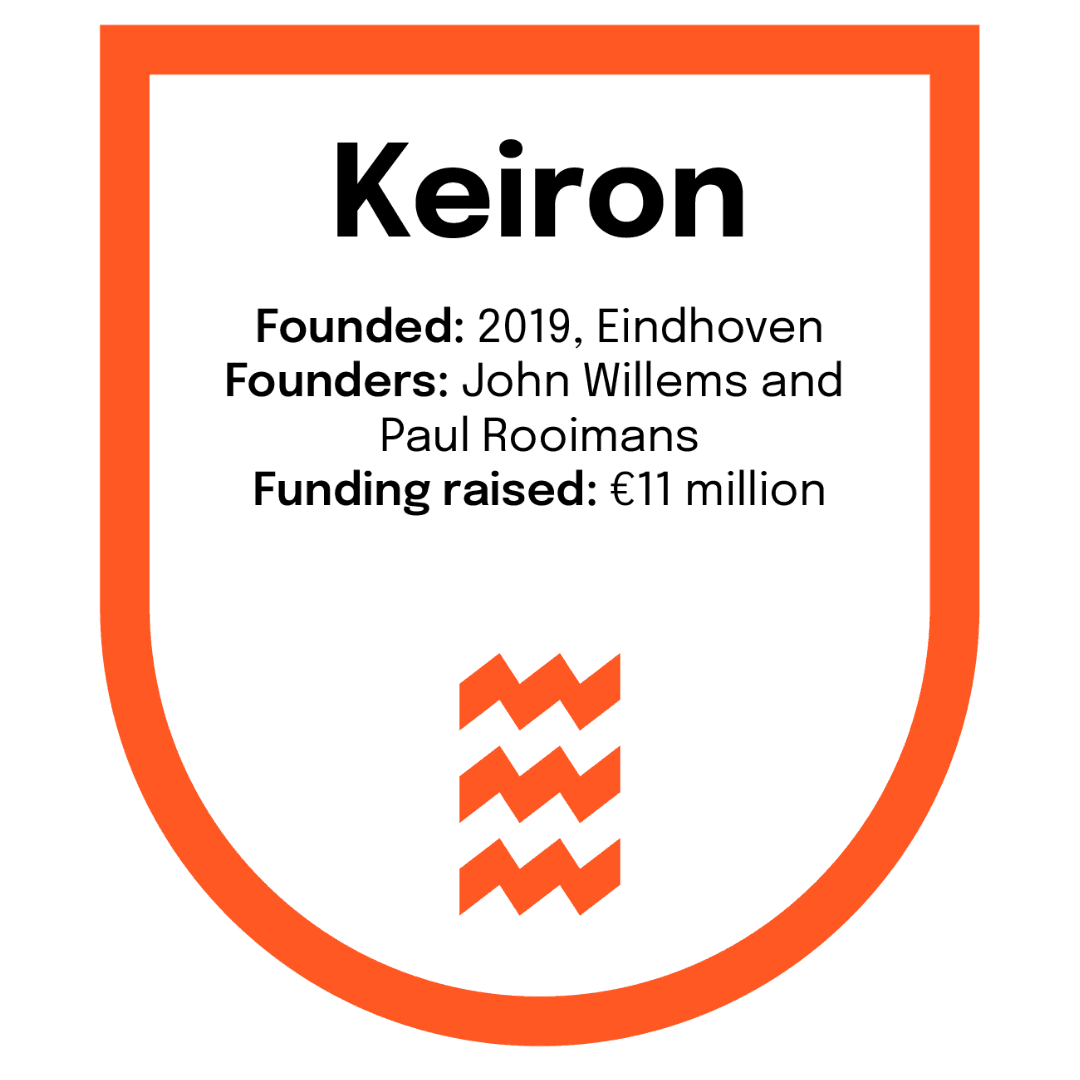Keiron transforms electronics: digital solder paste deposition
This week we are highlighting the winners of the Gerard and Anton Awards. Today: Keiron.
Published on July 6, 2025

As editor-in-chief, Aafke oversees all content and events but loves writing herself. She makes complex topics accessible and tells the stories behind technology.
At Eindhoven's High Tech Campus, Keiron Technologies is developing a technology that is radically changing electronics assembly. Founders John Willems and Paul Rooimans are developing a contactless, digital method for applying solder paste to printed circuit boards — a crucial yet often overlooked step in the production process.
Rooimans: “Our technology makes it possible to assemble components that simply cannot be built using conventional methods. We focus on nanoliter-level accuracy — that opens doors in AI chips, advanced packaging, and high-density layouts.”


From frustration to innovation
The idea arose from frustration on the production floors of high-end Original Equipment Manufacturers (OEMs) and Electronic Manufacturing Services (EMS) parties, where traditional stencil and jet printing methods were reaching their limits. Components are becoming smaller, more complex, and positioned closer together. Think of AI chips and advanced sensor systems with tens of thousands of solder points per component. Precision at the nanoliter level is not only desirable but essential. Keiron makes this precision possible with an innovative approach based on Laser-Induced Forward Transfer (LiFT), which applies solder paste with great accuracy and without physical contact. This makes the technology not only more reliable but also more scalable and sustainable.
Eindhoven's Brainport ecosystem played a key role in Keiron's development. With access to top institutes such as TU/e, TNO, and Holst Centre, and a network of high-tech partners, Keiron quickly went from concept to an industrially deployable product. “We didn't do this in isolation,” says Rooimans. “Through co-creation with strategic production partners, we were able to validate the problem in practice. Brainport played a crucial role in this. Without the ecosystemic power of R&D, industrialization partners, and deep tech investors, we would never have been able to scale up so quickly.”
Raising the bar in high-tech
With a market for solder paste printing worth more than $6 billion and growing demand for fine-pitch and high-density components, Keiron is positioning itself as a pioneer. Unlike established players such as ASMPT (DEK), Panasonic, and Mycronic, which are sticking to physical printing methods, Keiron has resolutely opted for digitization.
“We offer a fundamentally different approach. Contactless, traceable, and scalable—that's a real step forward,” says Rooimans.
The timing is perfect: miniaturization, AI integration, and geopolitical reindustrialization (think EU and US CHIPS Acts) are increasing the demand for reliable, digital assembly processes. Keiron is responding to this with results. More than 30 systems are now on order, the first machines will be delivered at the end of this year, and work is underway on a second, faster generation. “The fact that big, international companies actively contribute to our roadmap shows that we are building something that is needed,” says Rooimans.
External Content
This content is from youtube. To protect your privacy, it'ts not loaded until you accept.
The eternal question of missing capital
However, it is not all sunshine and roses. According to the founders, the availability of growth capital for deep tech in the Netherlands remains a concern. “There is technology, talent, and a startup-friendly environment — but there is a lack of venture capital with vision and scale,” says Rooimans. “We have raised €11 million, but many of our peers are stuck in the early stages while we are scaling up.”
If they hadn't started in Brainport, they would probably have gone to Dresden, Grenoble, or the Boston area—regions with similar talent and infrastructure. But the founders emphasize that Brainport's unique combination of technical know-how, industrial focus, and collaboration is crucial to their success.

G&A 2025
Every year, we spotlight 10 start-ups from the Brainport region. Each receives a Gerard & Anton Award.

